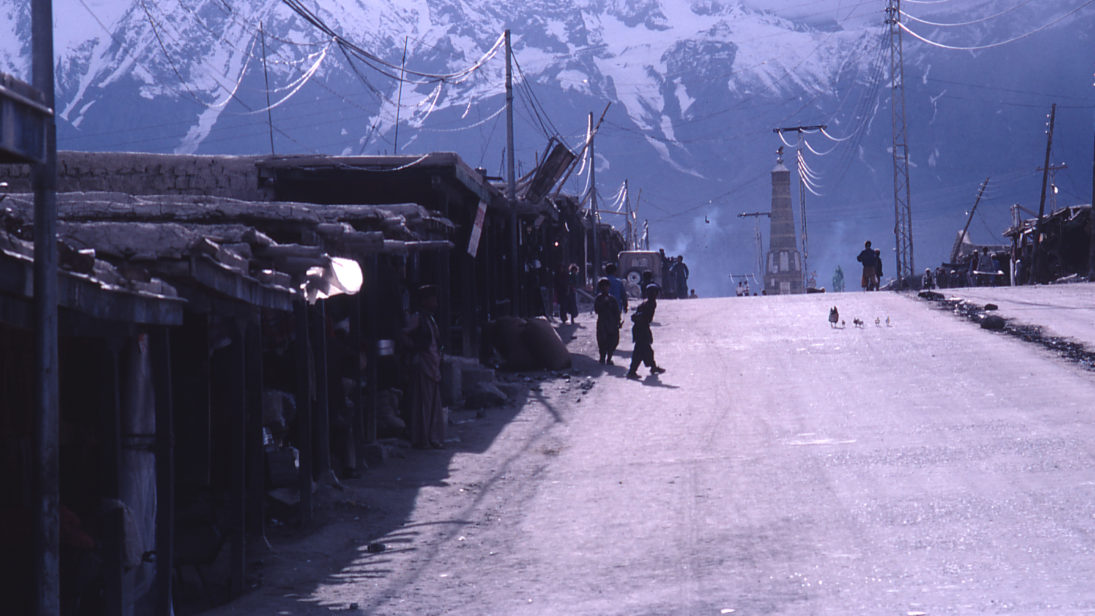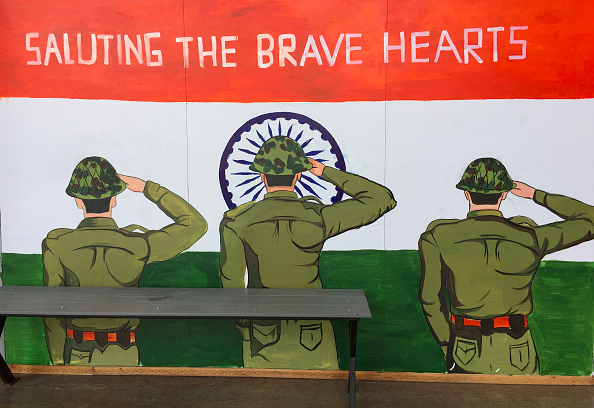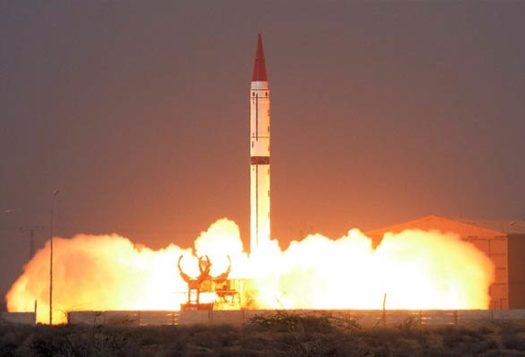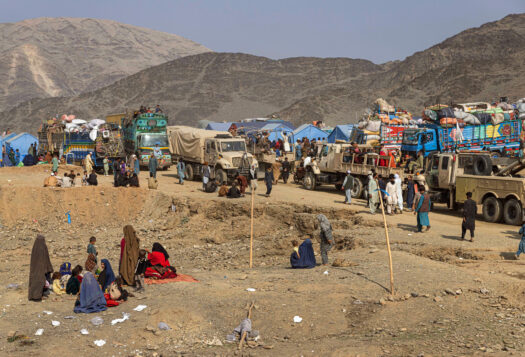
While it has been over a month since the deadly Jaish-e-Mohammad (JeM)-perpetrated vehicle-borne suicide attack that took place in the Pulwama district of Jammu and Kashmir, it is worthwhile to dig deeper into the critical security considerations that the attack presents. India’s national security architecture should focus on these concerns in a dynamic manner with a multi-pronged approach.
In response to the Pulwama attack, India took pre-emptive action targeting non-military installations in Balakot, Khyber-Pakhtunkhwa on February 26th, causing a war frenzy to seize both India and Pakistan. Soon, the entire focus shifted to the brave Wg. Cdr. Abhinandan Varthaman of the Indian Air Force, who had to eject from his MiG-21 Bison and land in Pakistan as part of an aerial dogfight that took place between Indian and Pakistani Air Forces. While India waited with bated breath for the fighter pilot’s return to his homeland, it lost sight of the most glaring red signal for India – the attack in Pulwama itself.
What Pulwama Signifies
The Pulwama attack is an alarming sign that India needs to buckle up and deal with terrorism better. JeM is a Deobandi militant outfit that aims to remove Indian control from Kashmir and also seeks to avenge the hanging of Afzal Guru, the mastermind behind the Parliament attack in 2001, who was sentenced to death in February 2013. It is known for its deadly attacks, and is also notorious for having introduced suicide terrorism in the Kashmir Valley. Its very first attack was at Badami Bagh Indian Army base in Srinagar carried out by an 18-year-old boy in 2000, the same year JeM was created. Other prominent attacks carried out by JeM include the Indian Parliament attack in 2001 and the attacks on defense bases in Pathankot and Uri in 2016.
While the Indian action and return of Abhinandan is a significant achievement for India, there are deeper questions that must be answered behind the smokescreen of theatrics. India has undoubtedly managed to send a loud and clear message to Pakistan that it will not sit back in the event of terror attacks like Pulwama, but this is also not the first time a Pulwama-style incident has taken place. With the attacks in Pathankot and Uri and the surgical strikes thereafter, India thought it had successfully sent a strong message across the border, only to witness a Pulwama after less than three years. This brings us to the question: does India have a coherent and effective security strategy vis-à-vis its nuclear neighbor Pakistan? This seems rather unclear now, with India undertaking ad-hoc measures to counter a threat that India has been acquainted with for several decades.

What Must India Consider?
There are a few critical points for Indian security policymakers to consider. First, policymakers must come to terms with the psychological significance that a suicide attack of this nature has. It has been almost 18 years since the last vehicle-borne suicide attack took place in the Valley. Further, the Pulwama perpetrator, Adil Ahmad Dar, was a Kashmiri youth – this lies in stark contrast to militants that came from across the border, as was the case in the 1990s. According to academic John Williams, terrorist organizations have two levels of audiences – direct and indirect. The first level consists of immediate targets that are prone to be victims of physical violence and are mostly innocent civilians. The second level is the intended audience, the ones who are not directly harmed but are made to witness. With the addition of the element of suicide, the impact on each of these audiences is magnified. The act of self-sacrifice displays the utmost level of dedication towards the cause and belief in the nobility of the attack. Adil Dar represents a new generation of Kashmiri youth prepared to sacrifice their lives in an attack against India. Does that make him potentially qualified to become a catalyst for militancy and protest in the Valley, like Burhan Wani? Are Indian security policymakers considering the possibility that this incident underscores a new trend in militancy in the Valley with the heightened role of social media that previously helped Wani shoot to fame?
Adil Dar represents a new generation of Kashmiri youth prepared to sacrifice their lives in an attack against India… Are Indian security policymakers considering the possibility that this incident underscores a new trend in militancy in the Valley with the heightened role of social media that previously helped Wani shoot to fame?
Second, the government and civil society of India should enact policies that ideologically counter the drivers of Pulwama-like attacks. It is true that the geographical proximity of Indian-administered Kashmir to Pakistan enables anti-India extremist narratives to flourish through cross-border infiltration, including the movement of men and material. However, Adil Dar’s commitment to the act can be largely attributed to the anti-India ideologies and activism built on a narrative of self-determination emanating from within Kashmir. The last thing that should be happening in India after the Pulwama attack is the targeted discrimination of Kashmiris, which has the lethal ability to provide fodder to the anti-India narrative. There is a need for both factors to be considered through enabling Kashmiri youth to secure their futures. This may be possible through better opportunities for education and employment in the Valley and other parts of India. This will not only discredit the anti-India narrative but will also help facilitate integration of Kashmiris into India. While some such programs exist in the Valley like the Udaan Scheme, there must also be an effort towards de-radicalizing the youth with the involvement of all stakeholders in the society. Apart from this, concerted efforts need to be made across the board to influence public opinion and build awareness on Kashmir in the rest of India. Universities and academic institutions must play a greater role in this regard.
Thirdly, the reality of international support must be fully understood before Indian policymakers begin to tell themselves that it is the only way out. Unfortunately, the battles against terrorism emanating from Pakistan are India’s own to wage. China’s technical hold on India’s bid to list JeM chief Masood Azhar as a global terrorist at the United Nations Security Council (UNSC) must also not come as a surprise. Although there has been significant progress in terms of international pressure on Pakistan with the United States, the United Kingdom, and France having moved a resolution to designate Azhar as a global terrorist under the 1267 al Qaeda Sanctions Committee of the UNSC, there is still a long way to go. This is not to say that efforts should not be made to further India’s interests in counterterrorism by working with other global powers. However, the Indian establishment should gauge Pakistan’s crucial role in the security dynamics of the region realistically and assess its ability to isolate Pakistan through this lens. With the U.S. plan to withdraw troops from Afghanistan and finalize a peace deal with the Taliban, it is inevitable for the international community to work with Pakistan on the broader issue of regional security with Afghanistan at the epicenter.
What is fundamental for India is to incorporate the ever-changing dynamics of the threat posed by terrorism from across the border using soft tools encompassing awareness building, youth engagement, and social inclusion in its security strategy, alongside the pre-existing traditional security mechanisms.
Despite an international show of support for India – particularly at the UNSC – there was a general urge by the broader international community for India and Pakistan to show restraint, as they were possibly looking at the skirmish through the lens of a nuclear escalation. This aspect will continue to dominate Indo-Pak dynamics during crises insofar as the international reaction is concerned. This reinforces the fact that India needs to carefully calibrate its handling of terrorism emanating from Pakistan largely through bilateral engagement.
What is fundamental for India is to incorporate the ever-changing dynamics of the threat posed by terrorism from across the border using soft tools encompassing awareness building, youth engagement, and social inclusion in its security strategy, alongside the pre-existing traditional security mechanisms. Apart from this, the media should play a more responsible role in handling the Indo-Pak and the Kashmir issues. Indian citizens are also obligated to being more responsible in reacting to sensitive conflict situations like Kashmir. National security cannot be a concern limited to the decisionmakers in India alone in such times.
***
Image 1: Ole Holbech
Image 2: NurPhoto


